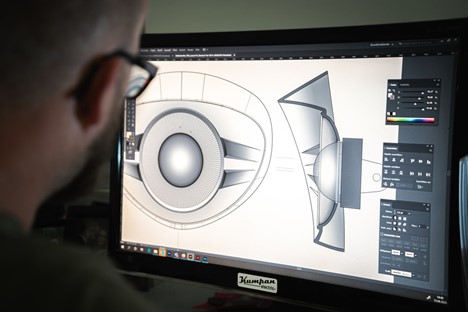What are the different types of BOMs?
Successful digital transformation projects are pivotal to your success. One of the most important parts is creating a digital thread through all of your Bill of Materials (BOM) processes to ensure you can engineer, build, and service products throughout their lifecycle.
A widely accepted practice in discrete manufacturing is to use a BOM to detail all necessary components and instructions to manufacture products to specification. The BOM lists the parts, raw materials, and subassemblies needed to manufacture high-quality products.
eBOM (Engineering Bill of Materials): The eBOM focuses on the components and subassemblies needed to design a product.
mBOM (manufacturing Bill of Materials): The mBOM is generated for manufacturing purposes to include all comments for building the product.
sBOM (service Bill of Materials): The sBOM identifies the components crucial for servicing or repairing a product after it has been manufactured.
aBOM (asset Bill of Materials): While not a universally accepted term, the aBOM is a list of all the parts that make up the product, including major components, spare parts, and smaller pieces like nuts and bolts to help service workers when conducting maintenance.
How is each BOM used in the manufacturing process?
An eBOM is developed during the product design phase, generally using CAD tools. It has more detailed engineering information, such as geometric dimensions and tolerances (GD&T) and related engineering standards. While eBOMs are revised over the product’s lifecycle, it is far fewer times than mBOM.
An mBOM includes parts and components but also provides routing or processing steps as the recipe for manufacturing and occasionally packaging information. Engineering teams create eBOMs, and Operations improve eBOMs for manufacturability and available parts in the supply chain to develop mBOMs. However, in this process, some GD&T (Geometric Dimensioning and Tolerancing) and related engineering information get lost.
Over time, the mBOM continues to evolve and diverge from the eBOM. The divergence expands as new machinery allows for operational choices previously not envisioned at the original design stage. Without a digital thread, CAD assets are rarely reconciled with information to map it back to the original eBOM.
Enterprise Resource Planning (ERP) software typically stores the mBOM. However, depending on the age and sophistication of the ERP implementation and the reliance on other systems like Manufacturing Execution Systems (MES), the mBOM may not be multi-level, making it more difficult to reconcile with the eBOM.

Creating a digital thread through all of your BOM types and use cases is necessary for designing, building, and servicing products.
BOM Variations make Servicing the Product in the Market Challenging
Once your product is in the market, the aftermarket spare parts or “service parts” are added to the product master and become a service Bill of Material (sBOM). The sBOM information is then used by the manufacturer’s field service team, customers, and other workers who need to fix and maintain the product.
Depending on the number of entities involved in servicing a product, there could be many variations of sBOM across many systems. This could lead to confusion about how information maps back to manufacturer systems and require various ways to keep that mapping together.
As manufactured equipment is increasingly used in the Industrial Internet of Things (IIoT) or other connected environments, the lack of bidirectional translation between sBOM, mBOM, and eBOM can negatively impact the ability to enable automation, manage the product lifecycle from design to customer service, and coordinate production with supply chain activities.
How CDS Visual Applies Artificial Intelligence to Create a Digital Thread Between Your BOMs
At CDS, we have taken the appropriate steps to solve this challenge by applying artificial intelligence (AI) to our CDS Partable product, which generates a digital thread across each of your BOMs.
Partable enables partly automated, human-assisted mapping between eBOM, mBOM, and eBOM to create a normalized aBOM (asset Bill of Material) that provides the foundation for up-to-date, accurate, and easy-to-use service processes.
The aBOM allows the parts catalog to be updated automatically when changes are made to the product or its serviceable components. This linkage has many benefits, including the ability to easily create and maintain product visualizations for service parts lists, maintenance instructions, and augmented reality experiences that are in sync with product design and manufacturing processes.
CDS Partable for aftermarket spare part search accelerates your e-commerce aftermarket spare part sales by enabling anyone to search and order spare parts for industrial equipment.
Learn more about how CDS Partable utilizes AI to help better service your products, or contact us for a demo.



















